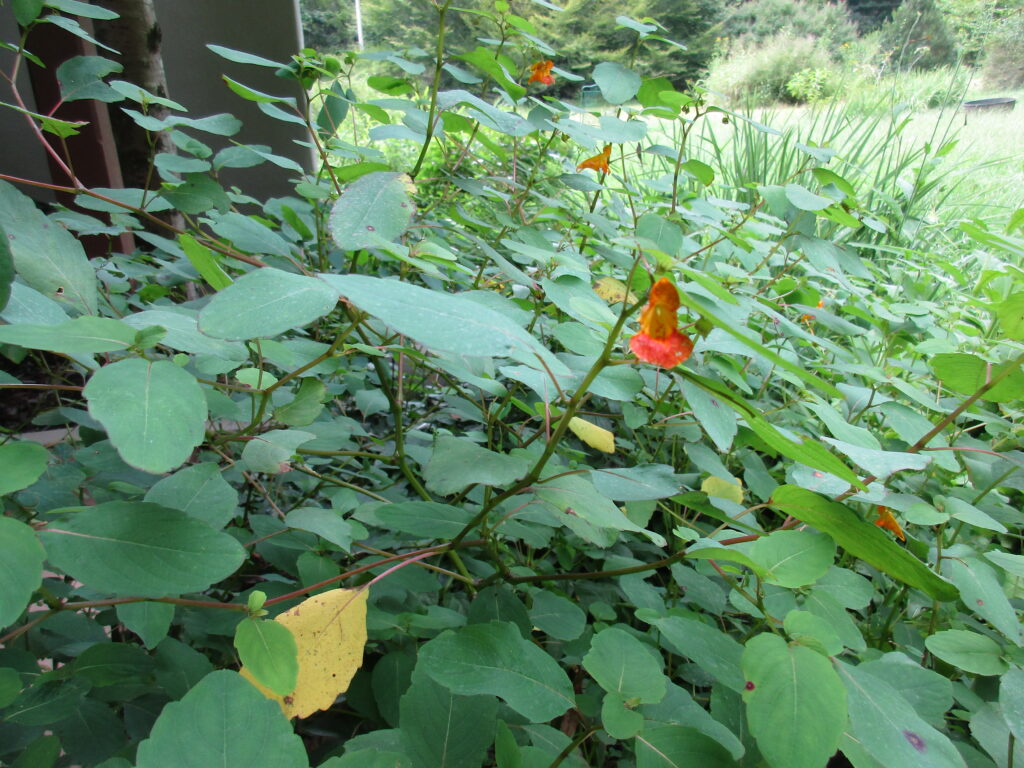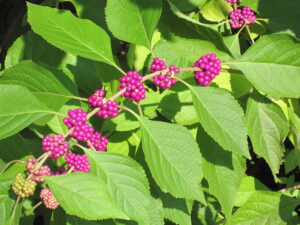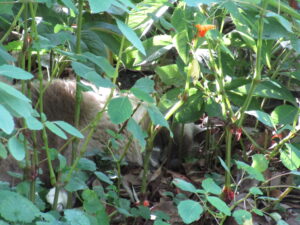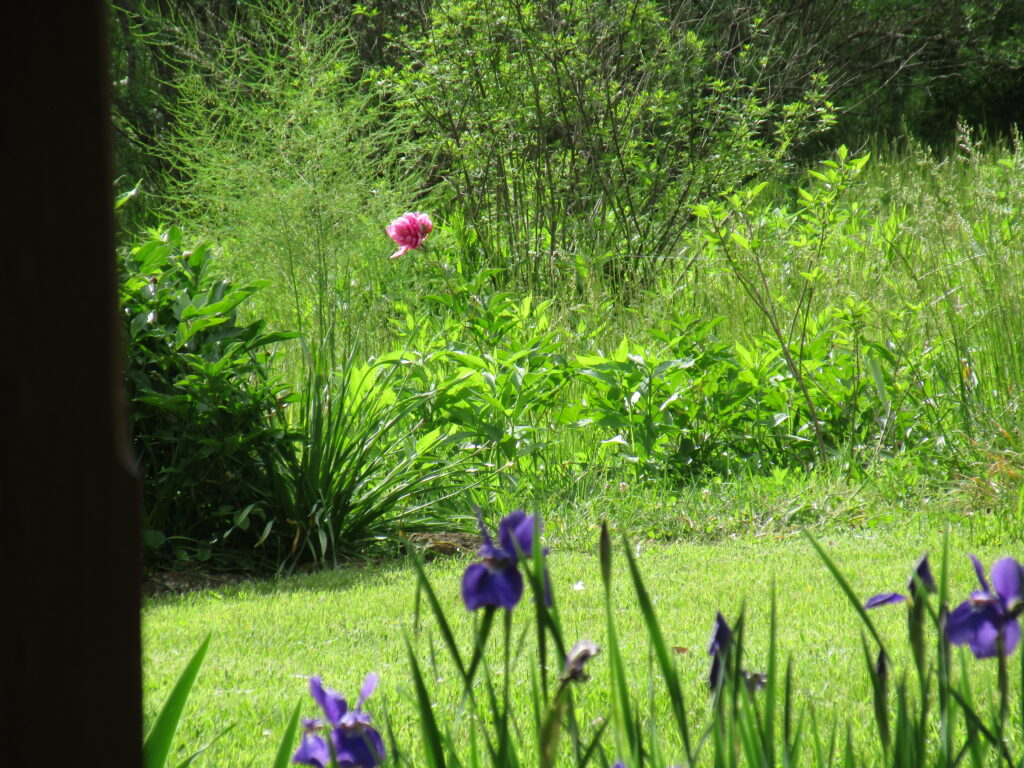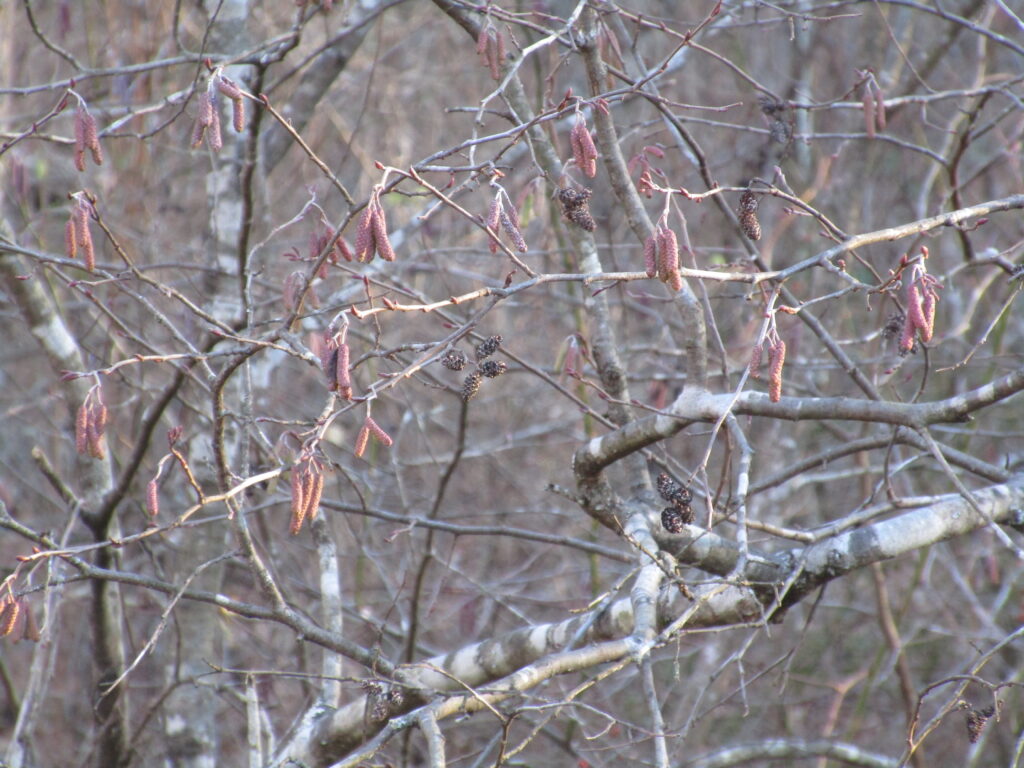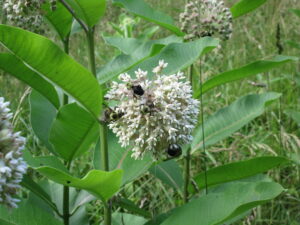Despite the autumn equinox, it’s always summer to me as long as the hummingbirds are here. They continue to delight each afternoon as I watch them from the glider porch zooming like the Jetsons through the jewelweed (Impatiens capsicum). A mockingbird has taken up residence in the forsythia tangle and begins his trill about the same time. He also sings to Johnny early in the morning when he sits on the rocking chair porch, but I’m not up then.
Beautyberries, both native (Callicarpa americana)
and Japanese (C. japonica)
are in their amethyst glory, stiffly upright branches bejeweled at the leaf axes in the former; arching wands of luscious berries weighed to the ground in the latter. The birds do not eat them now, but wait til winter when they’re wizened and provide needful nutrition.
The spicebush (Lindera benzoan) berries are disappearing, however, though I can’t tell who’s eating them. Spicebush is a lovely native, sparkling lemon-yellow leaves with red berries this time of year and in early spring blooming with pale yellow fuzz balls. It is a food source for the larva of the Spicebush swallowtail and indeed the Disney-like yellow, blue and black spotted butterflies flit about all through the hollow in these hot late season days. They, too, visit the jewelweed.
Ripening figs from the ‘Chicago Hardy’ in the back corner say summer’s not gone either and each time I pluck one and pop it into my mouth, I think, Aristotle must have done this. We live in paradise and are grateful.

